Experience a conversational search experience on Google Search by utilizing generative AI search on Google.
The online search space is changing rapidly with the introduction of conversational and generative AI models like ChatGPT and Bing AI Chat. To keep up with this changing sensation among internet users, Google introduced SGE or Search Generative Experience.
Keep reading to find out what is SGE or generative search on Google, its working process, advantages, limitations, and most importantly, how to use it today.
What is Generative AI Search on Google?
Before you get into the details of generative AI search on Google, first understand the current or conventional online search system. Before the launch of conversational AIs, search engines would show you results relevant to your search query.
For example, suppose you needed to look for a dog-walking agency in Santa Clara, St. Ventura, California. You might have selection criteria based on parameters like the individual should be: an experienced dog walker, passionate about dogs, certified dog-walker, living nearby, available for long hours, etc.
Unfortunately 😞, previously, you could not just feed all that into the search engine to find the best fit. You first need to look for dog walking services in your area and then visit individual agencies and review their features and public testimonies.
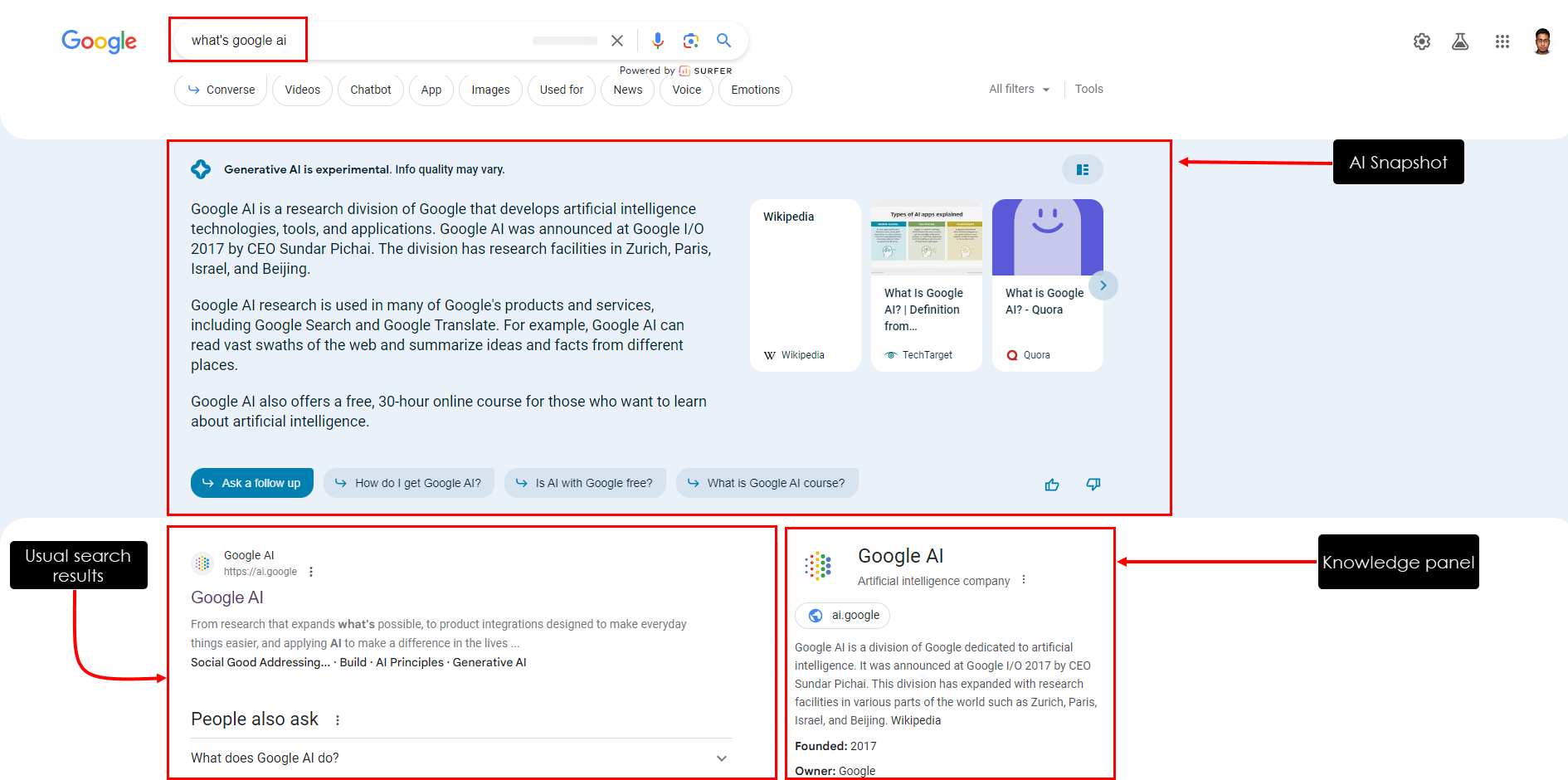
This is a lot of work. To reduce the search effort, Google launched SGE, which is currently in beta testing. SGE is the first step in changing the Google Search experience with generative AI.
When you use SGE, you shall notice your search results in the familiar way, where the conversational AI-generated response will show up on the top.
Prior to this, Google had tried to incorporate AI into the search experience through Google Multisearch, which is available on Android devices and iPhones. However, SGE is a leap ahead.
With Google generative AI search or SGE, you will be able to do the following when searching the internet:
- Ask long questions with many variables to a powerful AI model
- Get a quick snapshot of the current state of the searched topic, along with relevant website links
- Ask your search questions in a conversational window where you can put follow-up questions as well
- Create creative ideas right in the search box
- Generate text drafts created by AI
SGE or generative AI search is not going to replace the existing websites that feed high-quality content to Google Search. It will improve search quality, reduce the manual work for online research, and connect you to the best resources on the web.
Tired on waiting for SGE while its in beta testing? Why not try the best AI search engines to use as Google alternatives in the meanwhile?
SGE has plenty of advantages over the normal search, allowing you to get in-depth answers to your queries online.
The Advantages of Generative AI Search on Google
- You can search complex questions and get an easy answer with a lot of facts and data without surfing the whole internet
- When needed, you can deep dive into website results that supplement the AI answer
- The Google Search results become more relevant to the search query
- Get quick answers for common topics in summary format
- You can get high-quality search results for shopping questions and make informed buying decisions
However, since SGE is in beta testing, there are a few limitations.
The Limitations of Google Generative AI Search
- Only available in the USA in US English
- The AI snapshot and displayed web results may not always match
- Similar to other large language models or LLMs, SGE suffers from AI hallucination
- SGE may show the AI snapshot relevant to the top-ranking website on the search, so this is a problem of bias
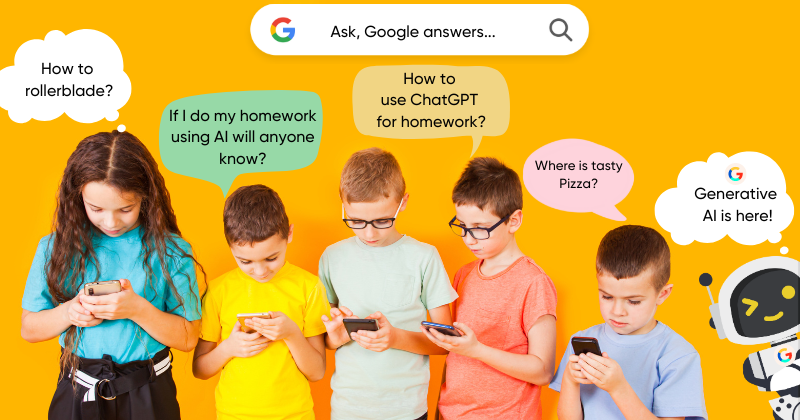
Nonetheless, Google will roll out the full release at one time or another. So, it’s better to understand how SGE works right now so that you’re not behind the curve when the time comes.
How Does Generative AI Search Work on Google Search?
Primarily, this new AI-powered search experience will show AI-generated content when available, along with website results, Ads, Snippets, People Also Ask, Google Knowledge Panel, and so on.
The motive is to allow internet users to ask complex and conversational questions to the Google Search engine itself without their having to depend upon other AI tools. In response, they will get replies just like you were talking to a subject matter expert. The experience is similar to that of the ChatGPT app. However, while ChatGPT is unable to research the internet and get the latest result of a complex search query with multiple variables, Google SGE can.
Here is how the generative AI search experience will work on Google Search:
AI-Generated Snapshots
When possible, SGE will show AI generated summary of the topic or question you queried on Google generative AI search. This will show up at the top before continuing the page with relevant websites of better authority on the topic.
The AI snapshot gives you an overall understanding of the search query. For example, if you are a student of biology and entered the following query:
🤖 What is Charles Darwin’s theory of evolution?

You could get a prompt to generate an AI snapshot, or an AI summary will show up automatically. After knowing Charles Darwin’s theory of evolution in a crisp summary, you can engage with the AI for follow-up questions or surf the websites that Google Search listed for you for further knowledge on the topic. In a way, the language would be a bit like a ChatGPT write-up.
Conversational Experience
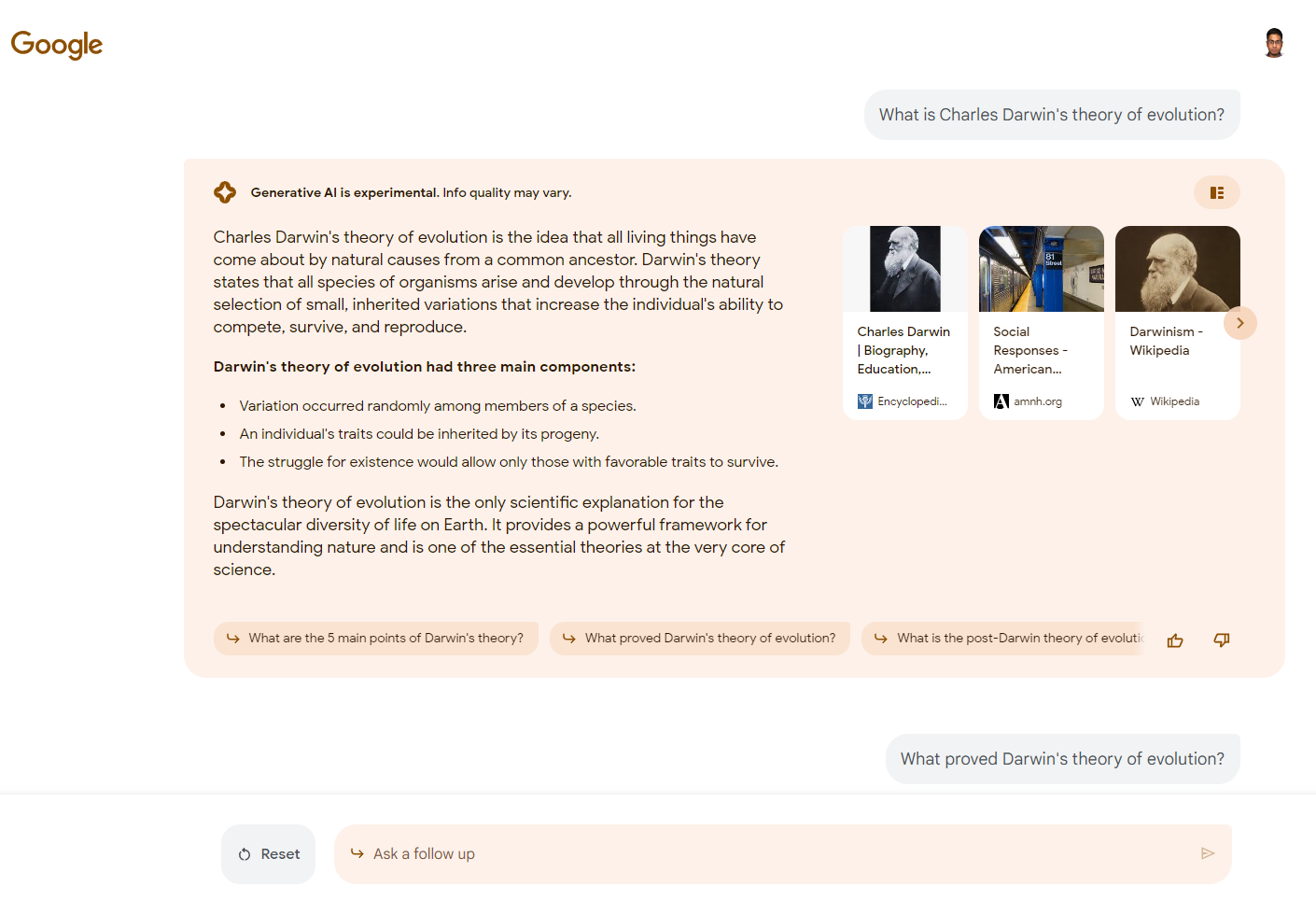
Google Search AI will also show you an option for a fully conversational search experience. It will show the following call-out buttons above and below the originally searched query:
- Converse (shows up above the AI snapshot panel)
- Ask a follow-up (available below the AI summary)
Clicking these buttons will take you to an immersive chat interface where Google Search AI will answer the follow-up questions you ask.
You can also see additional search ideas below the AI snapshot. For example, searching for the above question gives me the following search ideas:
🤖 What are the 5 main points of Darwin’s theory?
🤖 What proved Darwin’s theory of evolution?

Thus, Google Search will be able to mimic AI research assistants by providing a more natural and conversational interface.
Niche Specific Searches
Google generative AI search also supports shopping, local search, and other niche-specific searches. For example, you may search the following topic:
🤖 best Apple AirPods
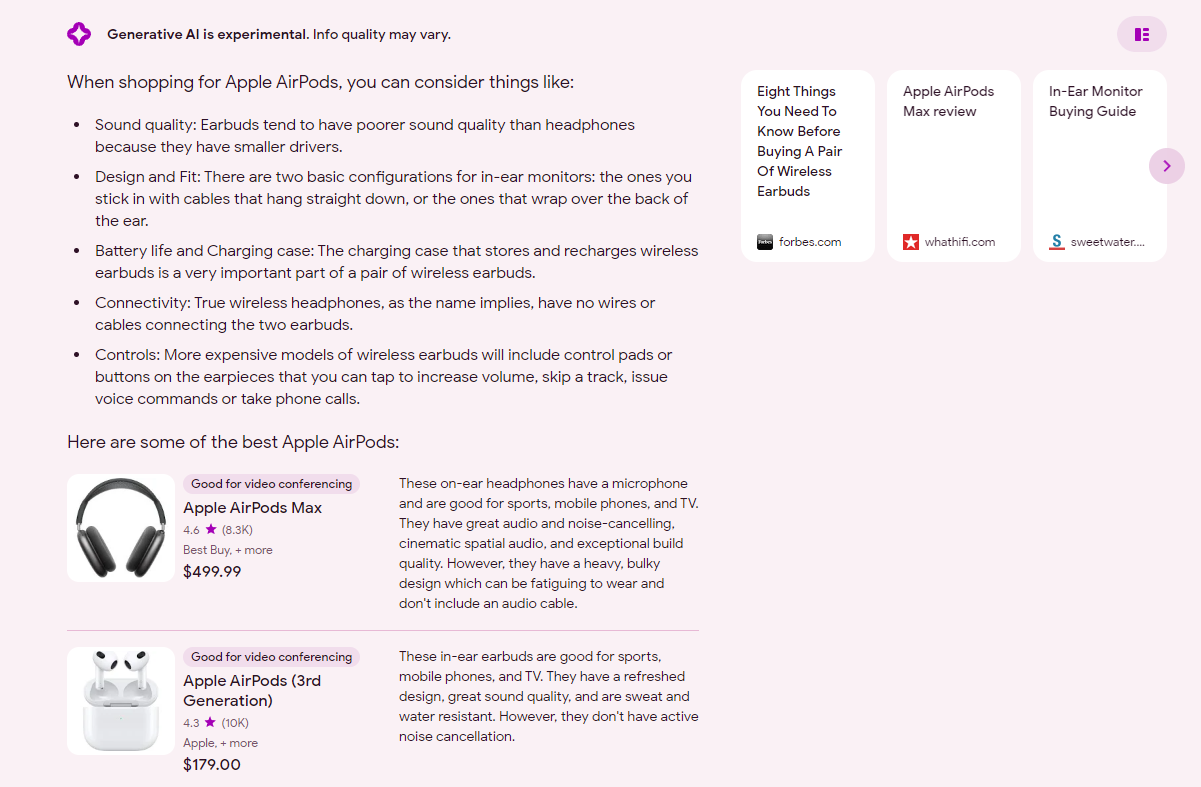
A generative AI panel will tell you the features to look for when shopping for Apple AirPods. Then, it will list top and trusted shipping destinations like Best Buy, Apple, Verizon, etc., along with pricing and public review scores from the respective marketplace. This section is powered by Google’s Shopping Graph for the ultimate shopping results.
Online Ads
You will still be able to see advertisements, and ad agencies or brands will be able to promote their products and services on Google Search. Ads will continue to show the Sponsored tag when they show up.
Therefore, Google SGE or generative AI search is not going to end the current economy around Google Search and online advertisements.
Creative Search Results
Search Generative Experience will serve you creative results that you do not get in the conventional internet search. If you are shopping for a new smart air fryer as an addition to your smart kitchen on Google Search AI, it will also show creative ideas to show off the product on social media or how to use it to create YouTube videos for your channel.
Also Read: Ways Artificial Intelligence Can Make Your Kitchen Smart
The AI snapshot can also show business ideas if you search for a relevant question or keyword. For example, you searched for the term “life coach” on Google Search. It could show you an AI-powered summary for a life coach, along with career or business ideas. Thus, it will become pretty easy to start a business with AI.
With all these benefits, it makes sense to sign up for SGE as soon as possible to get a taste of this experimental AI system.
How to Sign Up for Google Generative AI Search
Since SGE is still in its early phase of development, it is not available to everyone who uses Google Search in the US. You need to sign up for a beta testing program on Google Search Labs using your Google account. If Google sees you fit for the program, they might allow you to access the generative AI search feature.
Find below how to join the waitlist or request access to Search Labs programs:
- Go to the Labs With Google website.

- In the Available in Labs list, find the Labs project you want to join.

- For Google SGE or generative AI search, scroll down to the “Help shape the future of information” section.
- Click the Join Waitlist button.
- Follow the on-screen instructions to sign up.
- Wait for the confirmation email when access to the Labs project is granted by Google.
When you have access to “Google’s latest experiments in Labs” portal, you should see the available projects accessible to you to beta-test. Suppose Google accepted you for the SGE project. You should see the following screen upon accessing Search Labs:
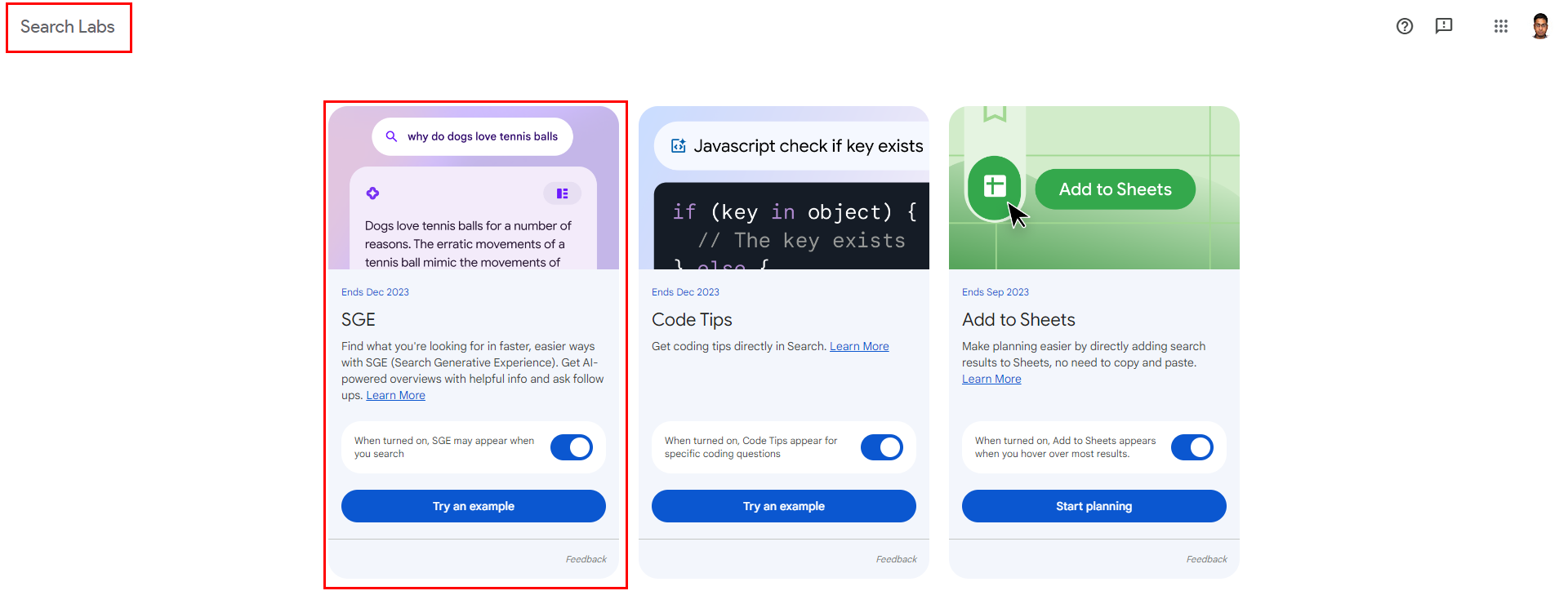
As Labs with Google is US-only, you will not be able to join the waitlist and evaluate beta testing projects like Google Search AI from outside the US.

If you still need to test Google SGE or other Labs programs for educational and research purposes, you can access the Labs With Google website using one of the best VPN services mentioned here.
How to Activate Generative AI Search on Google
Let’s consider you have access to the SGE program on Labs With Google. Find below how to turn this feature on:
- Go to Search Labs by clicking the invitation link in your email. It could be a button that says Try the demos!

- Alternatively, you can directly visit Search Labs.
- You should now see the following cards on Search Labs:
- SGE: AI-powered Google Search
- Code Tips: Coding tips on Google Search
- Add to Sheets: Adds Google Search results to Google Sheets

- Turn on these Google Search AI features by sliding the toggle buttons to the right.
- You must click the I agree button on the terms and conditions pop-up for all three features.
That’s it! You have successfully activated Google generative AI search. Keep reading to learn the way to best utilize this experimental feature.
Using Search Generative Experience on Google
When SGE is active on your Google account, follow these steps to use it:
- Open Google.com or use the Google Search screen on Google Chrome.
- Search for any topic of your interest. For example, I searched the following:
🤖 What is quantum computing?
- Google Search will show the Generative AI is experimental section on the top highlighted in a shade of green, pink, magenta, etc.

- This is the AI snapshot of SGE.
- You should also see website cards from which AI researched the summary, like Wikipedia, AWS, IBM, etc.
- At the top right corner of the AI snapshot, there is a button that expands the summary.
- You can scroll down to see conventional website search results according to the Google Search ranking algorithm.
- If you hover your mouse cursor over website results, you will see a button with three icons: Save, Share, and Sheets.
- Click the Sheets icon to export the website content to a Google Sheets file for research or planning purposes.
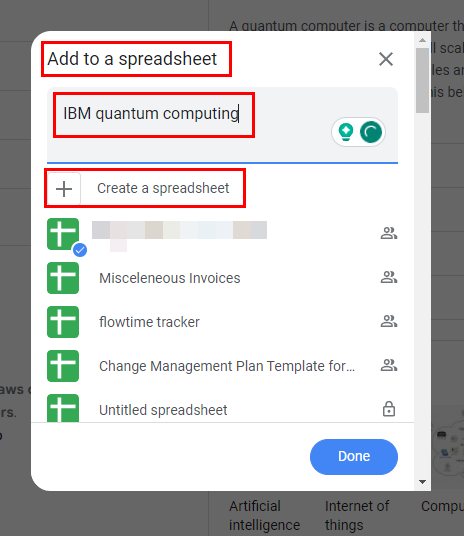
- If you want a conversational experience on the search topic, click Converse or Ask a follow-up.
At the time of writing, Search Labs AI is only available on the Google Chrome browser, Google Chromebooks, and Google Chromeboxes. You can not use Firefox or Edge to access the SGE features.
Once you’ve had your fill with the Google Generative AI Search, you can disable it to get back to the usual method of conducting a Google Search.
Disabling Google Generative AI Search
Suppose you no longer want the Google Search AI to show up. Here is how you can disable it:
- Go back to the Search Labs portal.

- Disable the AI cards, like SGE, Code Tips, and Add to Sheets.
- Refresh the Google Chrome page or restart the Chrome browser.
If you’re using your smartphone, Google also allows you to use SGE on your smartphone’s Google App.
How to Use Generative AI Search on Google App
You can also use Google Search AI on your Android and iOS devices. For this, you need to update or download the latest Google App from Google Play or App Store.
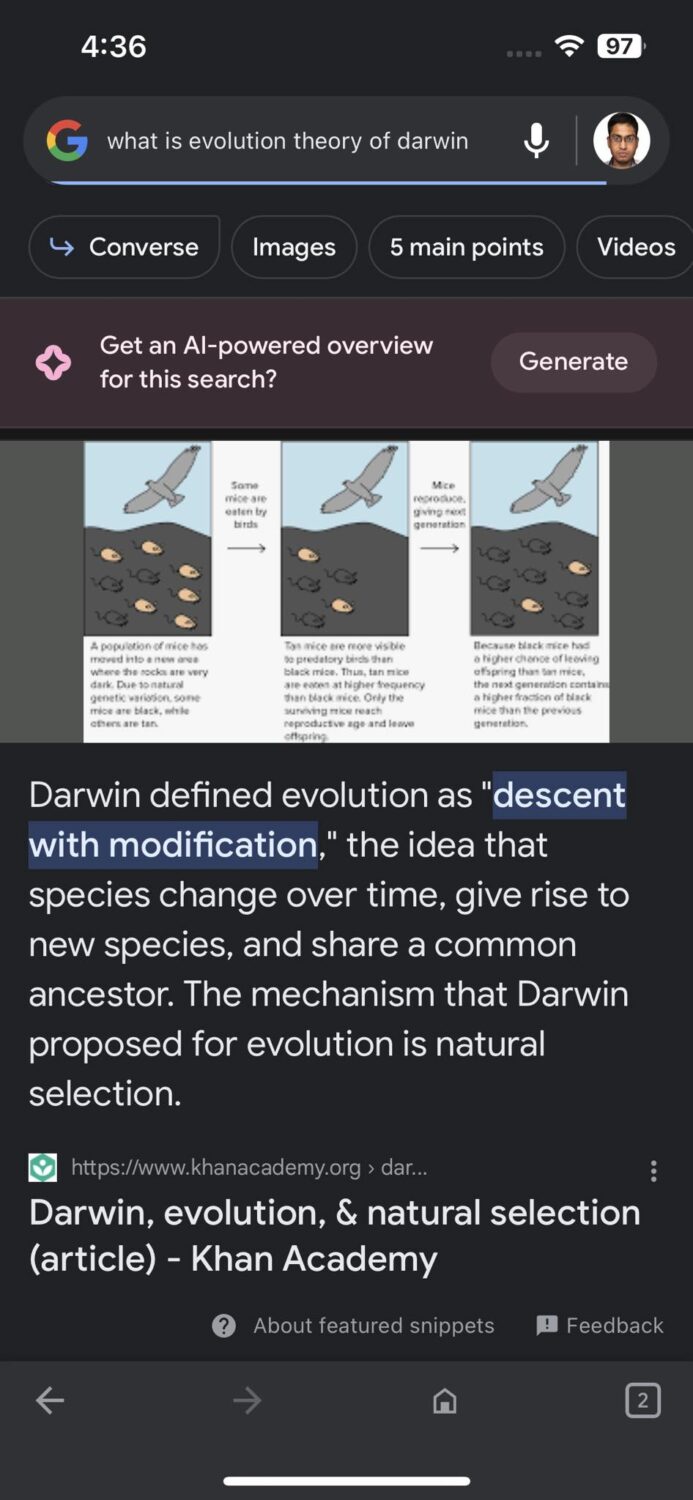

Once done, open the Google App on Android or iPhone. Tap the Search field and enter your search query. Hit the Search icon or magnifying glass to fetch search results.
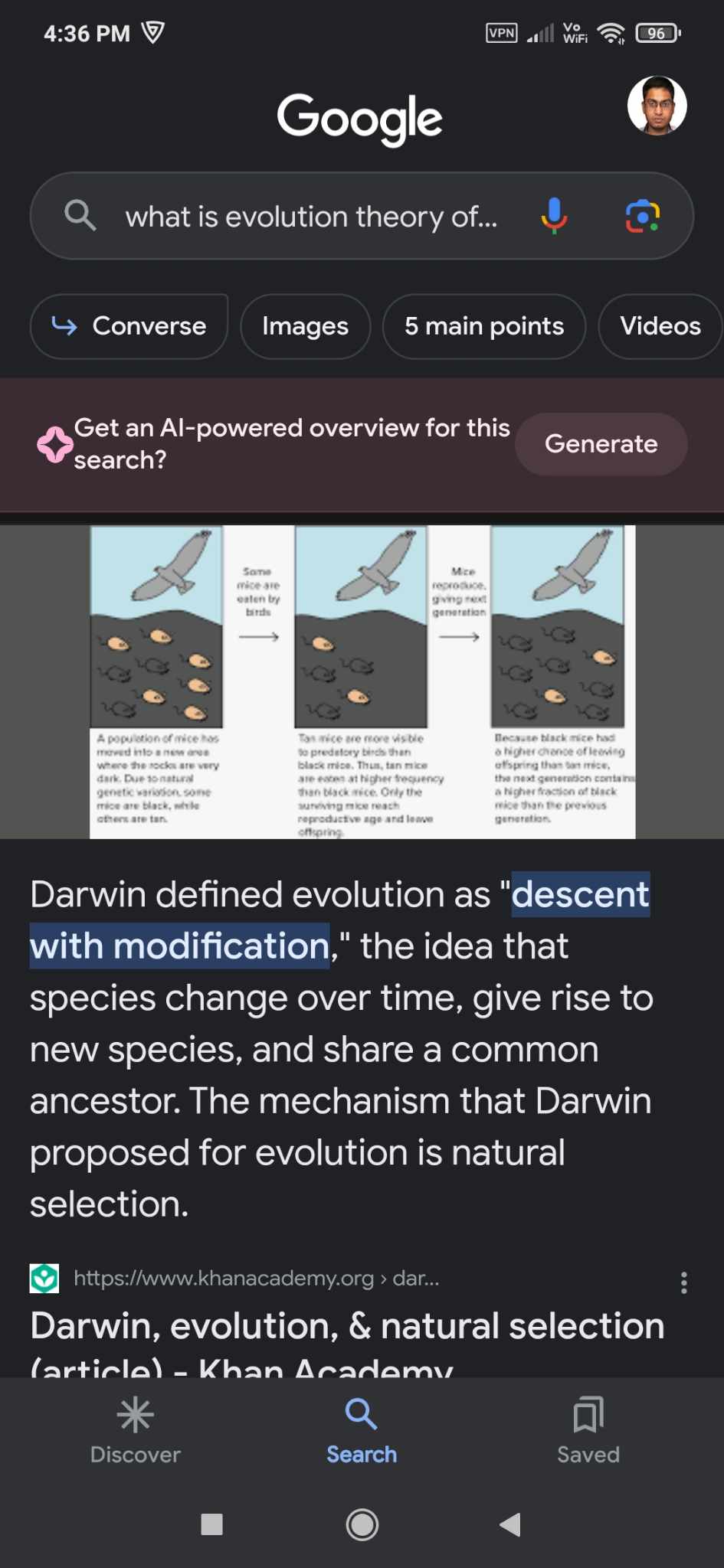
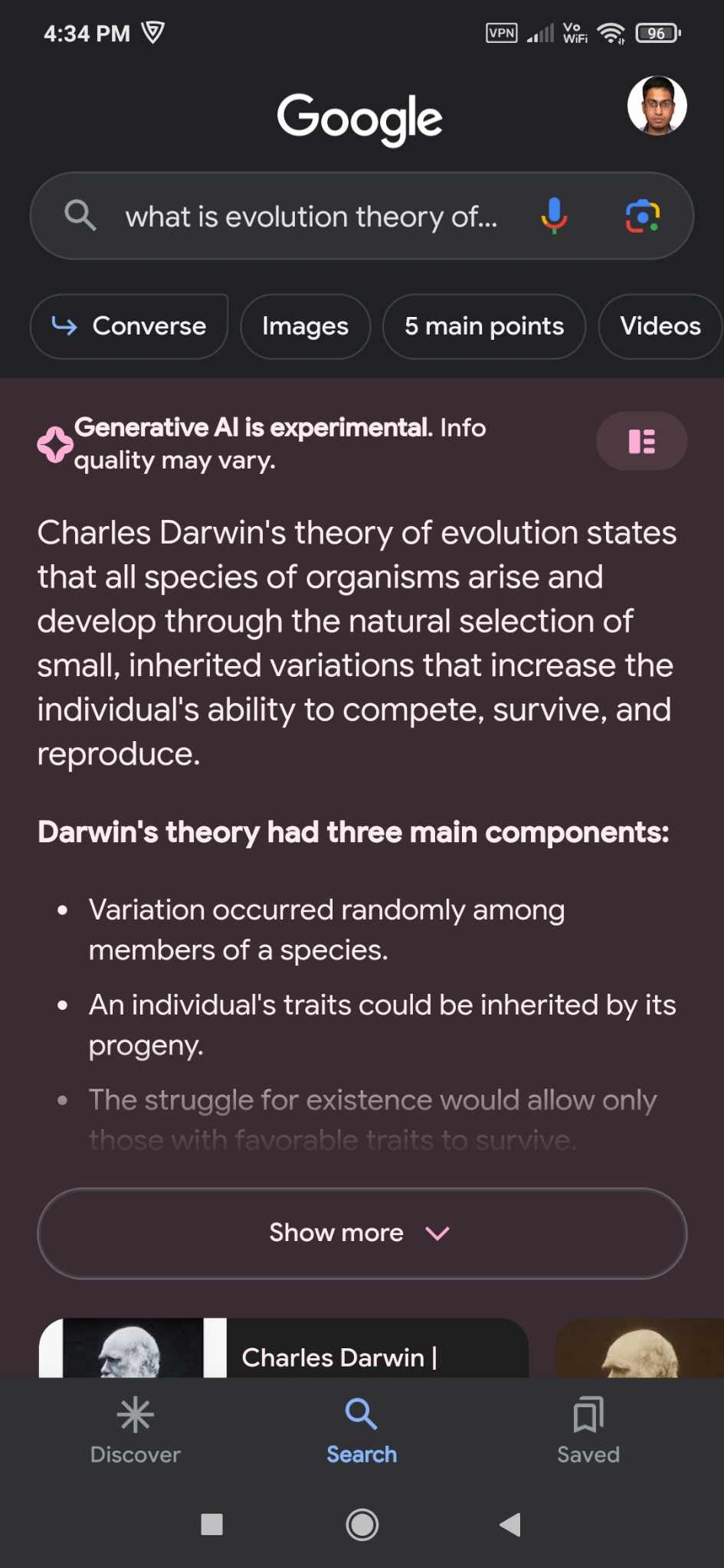
A Google Search results page will show with a pink or magenta-shaded Generate button. Tap this to get an AI snapshot of the topic you searched. For a conversational AI search experience, tap Converse or Ask a follow-up button.
The Converse mode has some bugs on the iOS Google app, hence does not work properly. But it works just fine on the Android Google App. Also, if there are no search topics on the Android Google App, the SGE will suggest topics you can search in a colorful interface.

To AI or not to AI?
So, now you know how to get this powerful yet simple search experience activated from your Google account. You have also learned how to use it on a computer and mobile device. Give this outstanding AI-based search engine a spin right away. And don’t despair if you are on the waitlist; you can check out some other AI tools from Google in the meantime. In fact, we have a detailed piece on Google Bard to show you how it works and how you can utilize it in different scenarios.
When AI was first introduced, there was a lot of skepticism over what it could accomplish, and it is still advisable to use AI with caution. But then, that applies to any information sourced from the internet. While AI is a perfect productivity tool as it reduces the time taken on research and outline creation, generative AI search promises a more intuitive user experience.


